1. Shenoy A. Is it the end of the road for dental amalgam? A critical review. J Conserv Dent. 2008; 11:99–107. PMID:
20142895.
2. Zhou X, Huang X, Li M, Peng X, Wang S, Zhou X, Cheng L. Development and status of resin composite as dental restorative materials. J Appl Polym Sci. 2019; 136:48180.

3. Veneziani M. Adhesive restorations in the posterior area with subgingival cervical margins: new classification and differentiated treatment approach. Eur J Esthet Dent. 2010; 5:50–76. PMID:
20305873.
4. Cardoso MV, de Almeida Neves A, Mine A, Coutinho E, Van Landuyt K, De Munck J, Van Meerbeek B. Current aspects on bonding effectiveness and stability in adhesive dentistry. Aust Dent J. 2011; 56(Suppl 1):31–44. PMID:
21564114.
5. Manuja N, Nagpal R, Pandit IK. Dental adhesion: mechanism, techniques and durability. J Clin Pediatr Dent. 2012; 36:223–234. PMID:
22838222.
6. Kikushima D, Shimada Y, Foxton RM, Tagami J. Micro-shear bond strength of adhesive systems to cementum. Am J Dent. 2005; 18:364–368. PMID:
16335047.
7. Welbury RR, Murray JJ. A clinical trial of the glass-ionomer cement-composite resin “sandwich” technique in Class II cavities in permanent premolar and molar teeth. Quintessence Int. 1990; 21:507–512. PMID:
2243955.
8. Andersson-Wenckert IE, van Dijken JW, Hörstedt P. Modified Class II open sandwich restorations: evaluation of interfacial adaptation and influence of different restorative techniques. Eur J Oral Sci. 2002; 110:270–275. PMID:
12120714.

9. Kielbassa AM, Philipp F. Restoring proximal cavities of molars using the proximal box elevation technique: Systematic review and report of a case. Quintessence Int. 2015; 46:751–764. PMID:
26159213.
10. Andersson-Wenckert IE, van Dijken JW, Kieri C. Durability of extensive Class II open-sandwich restorations with a resin-modified glass ionomer cement after 6 years. Am J Dent. 2004; 17:43–50. PMID:
15241909.
11. Lindberg A, van Dijken JW, Lindberg M. 3-year evaluation of a new open sandwich technique in Class II cavities. Am J Dent. 2003; 16:33–36. PMID:
12744410.
12. Dietschi D, Spreafico R. Current clinical concepts for adhesive cementation of tooth-colored posterior restorations. Pract Periodontics Aesthet Dent. 1998; 10:47–54. PMID:
9582662.
13. Grubbs TD, Vargas M, Kolker J, Teixeira EC. Efficacy of direct restorative materials in proximal box elevation on the margin quality and fracture resistance of molars restored with CAD/CAM onlays. Oper Dent. 2020; 45:52–61. PMID:
31084532.

14. Vertolli TJ, Martinsen BD, Hanson CM, Howard RS, Kooistra S, Ye L. Effect of deep margin elevation on CAD/CAM-fabricated ceramic inlays. Oper Dent. 2020; 45:608–617. PMID:
32243253.

15. Sarfati A, Tirlet G. Deep margin elevation versus crown lengthening: biologic width revisited. Int J Esthet Dent. 2018; 13:334–356. PMID:
30073217.
16. Moher D, Shamseer L, Clarke M, Ghersi D, Liberati A, Petticrew M, Shekelle P, Stewart LA. PRISMA-P Group. Preferred reporting items for systematic review and meta-analysis protocols (PRISMA-P) 2015 statement. Syst Rev. 2015; 4:1. PMID:
25554246.

17. Moher D, Liberati A, Tetzlaff J, Altman DG. PRISMA Group. Preferred reporting items for systematic reviews and meta-analyses: the PRISMA statement. PLoS Med. 2009; 6:e1000097. PMID:
19621072.

18. Rosa WL, Piva E, Silva AF. Bond strength of universal adhesives: a systematic review and meta-analysis. J Dent. 2015; 43:765–776. PMID:
25882585.

19. Sarkis-Onofre R, Skupien JA, Cenci MS, Moraes RR, Pereira-Cenci T. The role of resin cement on bond strength of glass-fiber posts luted into root canals: a systematic review and meta-analysis of
in vitro studies. Oper Dent. 2014; 39:E31–E44. PMID:
23937401.
20. Aggarwal V, Bhasin SS. Application of calcium silicate materials after acid etching may preserve resin-dentin bonds. Oper Dent. 2018; 43:E243–E252. PMID:
29953337.

21. Al-Harbi F, Kaisarly D, Bader D, El Gezawi M. marginal integrity of bulk versus incremental fill class II composite restorations. Oper Dent. 2016; 41:146–156. PMID:
26266653.

22. Kumagai RY, Zeidan LC, Rodrigues JA, Reis AF, Roulet JF. Bond strength of a flowable bulk-fill resin composite in class II MOD cavities. J Adhes Dent. 2015; 17:427–432. PMID:
26525007.
23. Al-Harbi F, Kaisarly D, Michna A, ArRejaie A, Bader D, El Gezawi M. Cervical interfacial bonding effectiveness of class II bulk versus incremental fill resin composite restorations. Oper Dent. 2015; 40:622–635. PMID:
26151459.

24. Aggarwal V, Singla M, Yadav S, Yadav H, Ragini . Marginal adaptation evaluation of biodentine and MTA plus in “Open Sandwich” class II restorations. J Esthet Restor Dent. 2015; 27:167–175. PMID:
25771941.

25. Koyuturk AE, Tokay U, Sari ME, Ozmen B, Cortcu M, Acar H, Ulker M. Influence of the bulk fill restorative technique on microleakage and microtensile of class II restorations. Pediatr Dent J. 2014; 24:148–152.

26. Czarnecka B, Kruszelnicki A, Kao A, Strykowska M, Nicholson JW. Adhesion of resin-modified glass-ionomer cements may affect the integrity of tooth structure in the open sandwich technique. Dent Mater. 2014; 30:e301–e305. PMID:
24950810.

27. Campos EA, Ardu S, Lefever D, Jassé FF, Bortolotto T, Krejci I. Marginal adaptation of class II cavities restored with bulk-fill composites. J Dent. 2014; 42:575–581. PMID:
24561041.

28. Aggarwal V, Singla M, Yadav S, Yadav H. Effect of flowable composite liner and glass ionomer liner on class II gingival marginal adaptation of direct composite restorations with different bonding strategies. J Dent. 2014; 42:619–625. PMID:
24631232.

29. Zaruba M, Wegehaupt FJ, Attin T. Comparison between different flow application techniques: SDR vs flowable composite. J Adhes Dent. 2013; 15:115–121. PMID:
23534015.
30. de Mattos Pimenta Vidal C, Pavan S, Briso AL, Bedran-Russo AK. Effects of three restorative techniques in the bond strength and nanoleakage at gingival wall of Class II restorations subjected to simulated aging. Clin Oral Investig. 2013; 17:627–633.

31. Lefever D, Gregor L, Bortolotto T, Krejci I. Supragingival relocation of subgingivally located margins for adhesive inlays/onlays with different materials. J Adhes Dent. 2012; 14:561–567. PMID:
22724114.
32. Rodrigues Junior SA, Pin LF, Machado G, Della Bona A, Demarco FF. Influence of different restorative techniques on marginal seal of class II composite restorations. J Appl Oral Sci. 2010; 18:37–43. PMID:
20379680.

33. Garcia-Godoy F, Krämer N, Feilzer AJ, Frankenberger R. Long-term degradation of enamel and dentin bonds: 6-year results
in vitro vs.
in vivo
. Dent Mater. 2010; 26:1113–1118. PMID:
20800270.

34. Fabianelli A, Sgarra A, Goracci C, Cantoro A, Pollington S, Ferrari M. Microleakage in class II restorations: open vs closed centripetal build-up technique. Oper Dent. 2010; 35:308–313. PMID:
20533631.

35. Cavalcanti AN, Mitsui FH, Lima AF, Mathias P, Marchi GM. Evaluation of dentin hardness and bond strength at different walls of class II preparations. J Adhes Dent. 2010; 12:183–188. PMID:
20157677.
36. Bertoldi C, Monari E, Cortellini P, Generali L, Lucchi A, Spinato S, Zaffe D. Clinical and histological reaction of periodontal tissues to subgingival resin composite restorations. Clin Oral Investig. 2020; 24:1001–1011.

37. Ferrari M, Koken S, Grandini S, Ferrari Cagidiaco E, Joda T, Discepoli N. Influence of cervical margin relocation (CMR) on periodontal health: 12-month results of a controlled trial. J Dent. 2018; 69:70–76. PMID:
29061380.

38. Heintze SD. Systematic reviews: I. The correlation between laboratory tests on marginal quality and bond strength. II. The correlation between marginal quality and clinical outcome. J Adhes Dent. 2007; 9(Suppl 1):77–106. PMID:
18341236.
39. Francois P, Vennat E, Le Goff S, Ruscassier N, Attal JP, Dursun E. Shear bond strength and interface analysis between a resin composite and a recent high-viscous glass ionomer cement bonded with various adhesive systems. Clin Oral Investig. 2019; 23:2599–2608.

40. Moazzami SM, Sarabi N, Hajizadeh H, Majidinia S, Li Y, Meharry MR, Shahrokh H. Efficacy of four lining materials in sandwich technique to reduce microleakage in class II composite resin restorations. Oper Dent. 2014; 39:256–263. PMID:
24151926.

41. Heintze S, Forjanic M, Cavalleri A. Microleakage of Class II restorations with different tracers--comparison with SEM quantitative analysis. J Adhes Dent. 2008; 10:259–267. PMID:
18792696.
42. De Goes MF, Giannini M, Di Hipólito V, Carrilho MR, Daronch M, Rueggeberg FA. Microtensile bond strength of adhesive systems to dentin with or without application of an intermediate flowable resin layer. Braz Dent J. 2008; 19:51–56. PMID:
18438560.

43. Baroudi K, Silikas N, Watts DC. Time-dependent visco-elastic creep and recovery of flowable composites. Eur J Oral Sci. 2007; 115:517–521. PMID:
18028062.

44. Roggendorf MJ, Krämer N, Appelt A, Naumann M, Frankenberger R. Marginal quality of flowable 4-mm base vs. conventionally layered resin composite. J Dent. 2011; 39:643–647. PMID:
21801799.

45. El-Damanhoury H, Platt J. Polymerization shrinkage stress kinetics and related properties of bulk-fill resin composites. Oper Dent. 2014; 39:374–382. PMID:
23865582.

46. Moorthy A, Hogg CH, Dowling AH, Grufferty BF, Benetti AR, Fleming GJ. Cuspal deflection and microleakage in premolar teeth restored with bulk-fill flowable resin-based composite base materials. J Dent. 2012; 40:500–505. PMID:
22390980.

47. Benetti AR, Havndrup-Pedersen C, Honoré D, Pedersen MK, Pallesen U. Bulk-fill resin composites: polymerization contraction, depth of cure, and gap formation. Oper Dent. 2015; 40:190–200. PMID:
25216940.

48. Elkaffas AA, Hamama HHH, Mahmoud SH. Do universal adhesives promote bonding to dentin? A systematic review and meta-analysis. Restor Dent Endod. 2018; 43:e29. PMID:
30135848.

49. Mahmoud SH, Al-Wakeel ES. Marginal adaptation of ormocer-, silorane-, and methacrylate-based composite restorative systems bonded to dentin cavities after water storage. Quintessence Int. 2011; 42:e131–e139. PMID:
22026005.
50. Moszner N, Salz U, Zimmermann J. Chemical aspects of self-etching enamel-dentin adhesives: a systematic review. Dent Mater. 2005; 21:895–910. PMID:
16038969.

51. Sattabanasuk V, Shimada Y, Tagami J. The bond of resin to different dentin surface characteristics. Oper Dent. 2004; 29:333–341. PMID:
15195735.
52. Cardoso PC, Lopes GC, Vieira LC, Baratieri LN. Effect of solvent type on microtensile bond strength of a total-etch one-bottle adhesive system to moist or dry dentin. Oper Dent. 2005; 30:376–381. PMID:
15986959.
53. Reis A, Loguercio AD. A 36-month clinical evaluation of ethanol/water and acetone-based etch-and-rinse adhesives in non-carious cervical lesions. Oper Dent. 2009; 34:384–391. PMID:
19678442.

54. Bhadra D, Shah NC, Rao AS, Dedania MS, Bajpai N. A 1-year comparative evaluation of clinical performance of nanohybrid composite with Activa™ bioactive composite in Class II carious lesion: a randomized control study. J Conserv Dent. 2019; 22:92–96. PMID:
30820090.
55. André CB, Chan DC, Giannini M. Antibacterial-containing dental adhesives’ effects on oral pathogens and on Streptococcus mutans biofilm: current perspectives. Am J Dent. 2018; 31:37B–41B.
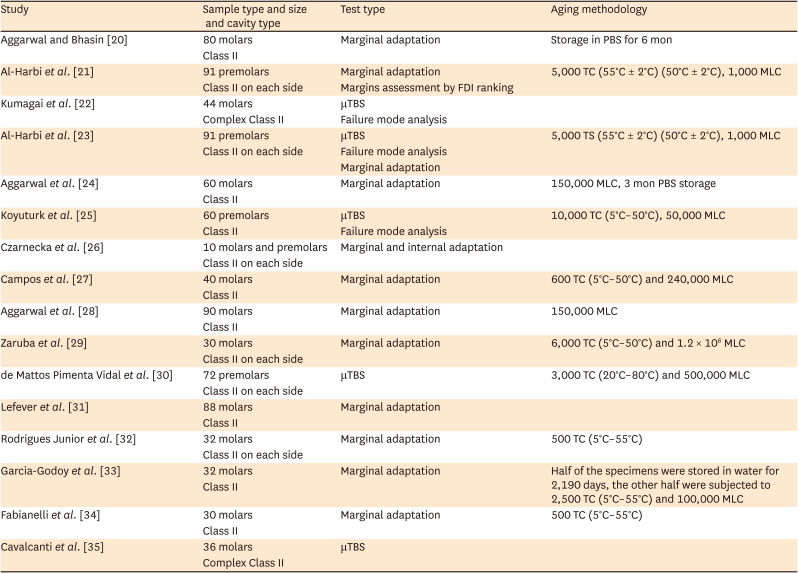
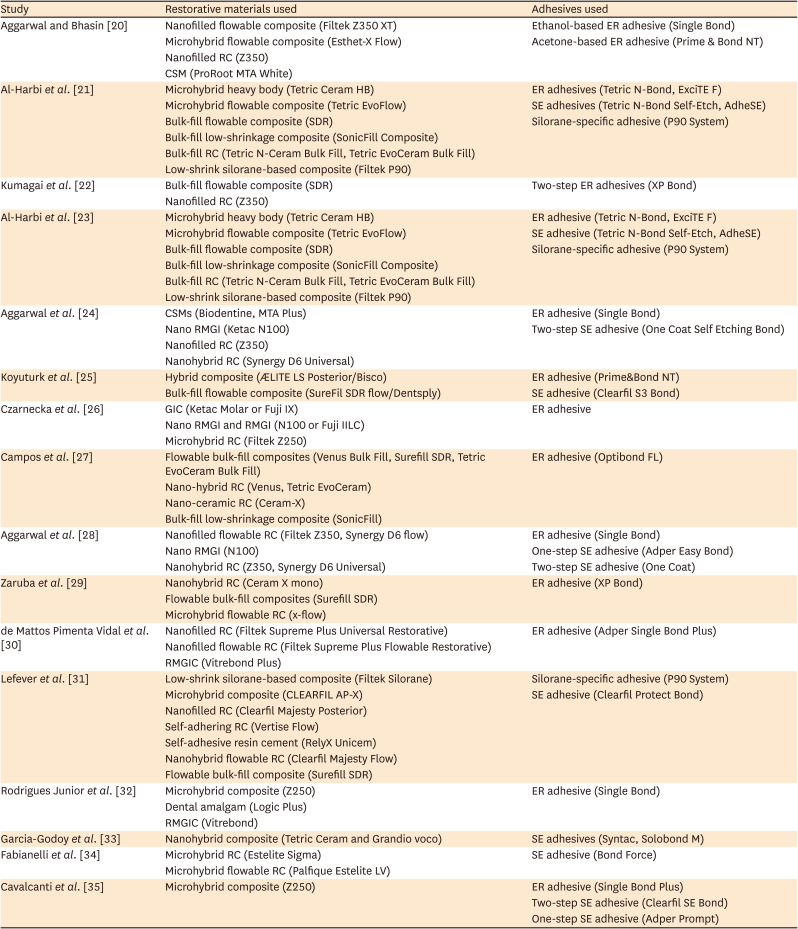
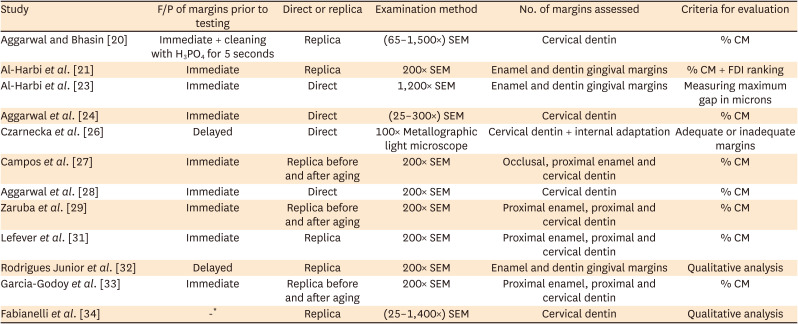





 PDF
PDF Citation
Citation Print
Print



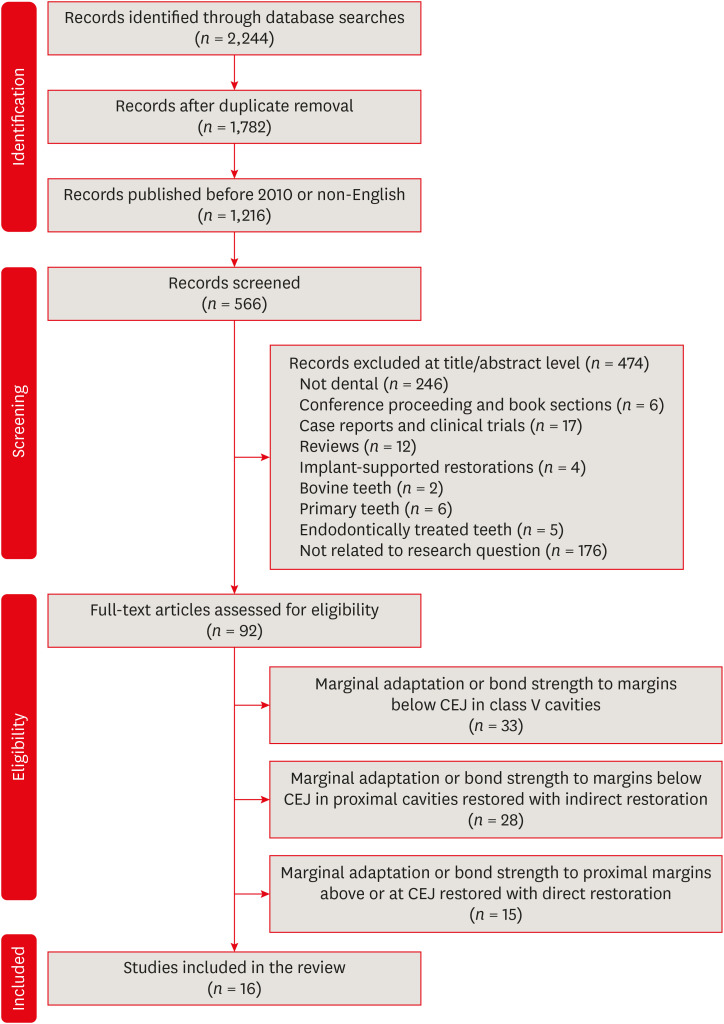
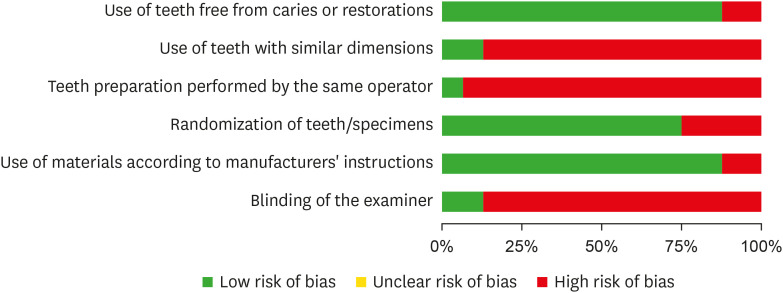
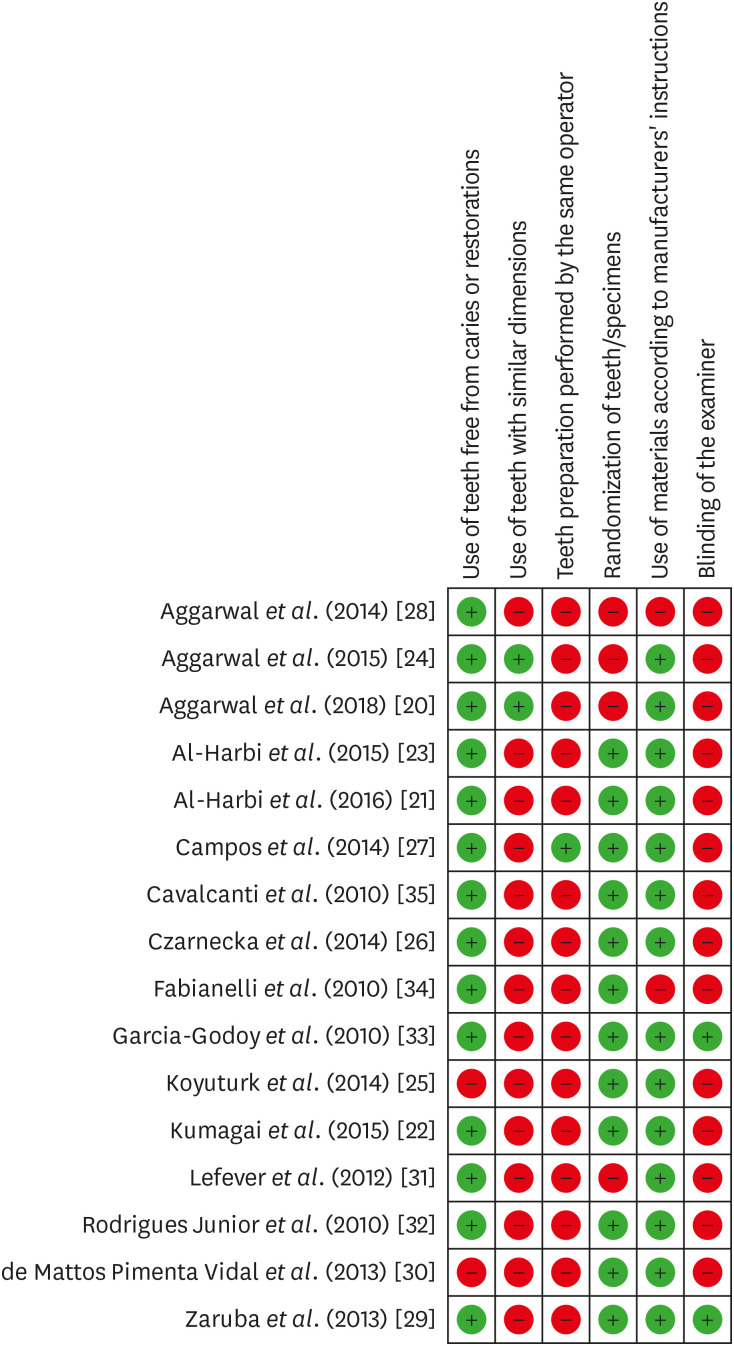
 XML Download
XML Download